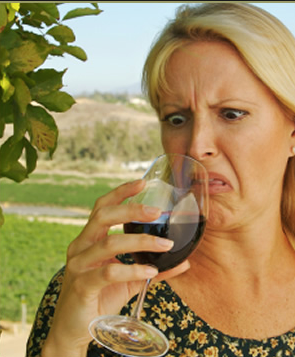Your Cart is Empty
FREE NEXT WORKING DAY DELIVERY FROM $250.
FREE NEXT WORKING DAY DELIVERY FROM $250.
How To Never Make A Wine Pairing Mistake Again.
May 13, 2018 3 min read

Food and wine pairing has been going on since food and wine existed; yet it’s still something we fret about. Here is how to avoid making a wine-food disaster.
Rule 1.
Know what you like and stand firm.

The most important thing, by far, in any wine pairing is YOU. YOU are drinking the wine, YOU are eating the food. So if you hate red wine but you are having steak, and someone insists you drink a full-bodied red, this isn’t a good pairing for you. Instead, find an option within the spectrum of wines that you like. If you are having a steak and you only drink white wines, then perhaps try a more full-bodied, robust white wine, such as an oaked Chardonnay/Semillion blend from Hunter Valley or an oaked Sauvignon Blanc from California.
This works conversely when you're hosting. Remember, it's not all about you, and that if you have guests, there will be people that don't like red or don't like white. Always have both available, whatever you're cooking. (You can always have some 'fail-safes' to hand - see below).
Rule 2.
Pair tastes, not things.

The most basic knowledge people have is to pair red meat with red wine, white meat with white wine. Yet this doesn’t work in all cases.
For example, a sweet-chili beef dish contains red meat, but the sweet-chili heat increases perception of alcohol burn, astringency and bitterness. This means that many a red wine would be poorly suited to this dish. Instead, something with higher sugar and fruit content, like an off-dry Riesling - which is white - might pair well.
So the key is to know what are the dominant tastes in your food (salty, sweet, umami, bitterness or sour) and know how to match the wine accordingly.

Rule 3.
Know the risky foods.

Generally sweetness and umami in food make wine less appealing – i.e more astringent, more acidic, less sweet and less fruit. Whilst salt and acid have the opposite effect, making wines less acidic, sweeter and more fruity.
This doesn’t mean you cannot pair with risky foods, just that you should be aware that you’re more likely to have a notably poor experience if things go array here.
So when eating a dessert or dishes with lots of umami (mushrooms, eggs and a lot of Japanese foods are examples) thing about avoiding full bodied, dry reds and think more to light, white wines with perhaps some sweetness.
Rule 4.
Know the risky wines.

That prize wine that you have been cellaring for years is probably what we would think of as a risky wine. The reason being that wines which age well have complexity, high tannin, high acid and just more structural flavor components in general. The more components there are, the higher the chances of conflicts arising and a mismatch of tastes and flavours in your moth.
However, all of those components mean that, when it does go right, it goes very right indeed! Food that enhances and highlights the intricate nuances of a complex wine is when you will have the most interesting and enjoyable food and wine pairing experience.
The simple trick is the more complex wines, the less flavour components you will want in the food. Buy a great cut of meat or seafood, season correctly, and let the wine do the rest.
In contrast, there are of course wines that will are more fail-safe, and that you will find it difficult to cause any problems with any meal. Simple, unoaked, fruity wines with a hint of residual sugar will never distract or destroy from your dinner - for whites, try a Pinot Gris and for reds, a mid-range unoaked Merlot from a warm climate, like Chile or Australia should do the trick.
So with these simple rules, you will never let your food or wine down again!
Good luck, and cheers to great food and wine!
Subscribe
Sign up to get the latest on sales, new releases and more …